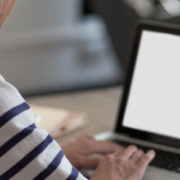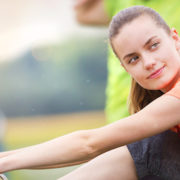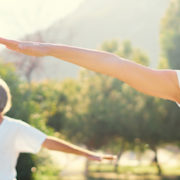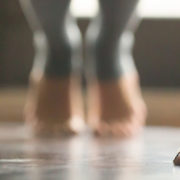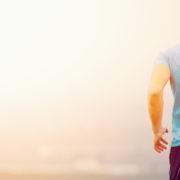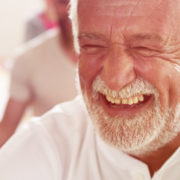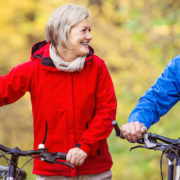By Penney Cowan | Featured on TheACPA.org
People with pain struggle far too often to validate their pain. Physical pain brings life to a screeching halt and prevents us from going about our daily lives or making future plans. It is the physical pain that is the root cause and controlling factor—pain and nothing else. Right? Certainly pain has an impact on our physical being. We struggle to complete the simplest of tasks, hampered by a reduced energy level that is limited to small bursts of time, sometimes not more than a few minutes. We hesitate to plan for tomorrow, let alone the future. Activities with friends and family diminish and far too often disappear as we find ourselves isolated and alone . . . and in pain. It is the pain that restricts our ability to function, right? But once you begin your journey from patient to person, working with an interdisciplinary health care team, your doctors and providers will talk about stress management, biofeedback, counseling, group therapy, and other ways to explore your emotions. You may react by thinking that your problem isn’t emotional, it’s physical. You may think, “My pain is real. I’m not exaggerating this suffering.” That is how I felt when I heard about depression, emotions, and counseling. I was not crazy, just in pain! Who wouldn’t be depressed if his life was controlled by pain?
However, I have learned a great deal since I left the pain program at the Cleveland Clinic 32 years ago. As I began my journey back to a person I realized that, although my pain is real, it controls my emotional being as much as it does my physical being. They are connected in so many ways. Listen to Your Body One of the most important skills I learned in pain management was to listen to my body. Before that, I would ignore the little signs of increased stress, tension, and pain and not hear my body’s voice until it was screaming at me. When this happens, we give in to the pain and avoid doing that pain inducing activity again. Over time, we realize that we have eliminated many activities in our life.
“Pain made me stop my rush through life and focus on individual things,” said Amanda Ford, a composer, teacher, singer, and musician in Pittsburgh, Pennsylvania. “Because I am hypersensitive to the ebb and flow of my pain, I have also experienced an increase in my empathy for others. When I am with someone, I am present in that moment, an active listener.” Ford believes that people with pain are more aware of the value of the present moment because they know that at any instant, their ability to use their time as they want can be taken away by a flareup of pain. “So I use my time wisely and do things that are important to me. And I have a very low tolerance for those who want to waste my time in trivial matters,” she said. She remembers well a time in a hospital, between appointments, when she heard a harpist playing in the lobby. “That music was a light in the darkness, so appreciated because it took me away from that place, and all those worries,” she said. Ford suggests that people with pain find the music that inspires joy for them. “Everyone has their own; it doesn’t have to be classical,” she said. Dr. Jensen agreed, noting that music stimulates the sensory cortex. The rhythmic patterns in music can also be a focus, like biking, walking, or swimming, that helps us tune out the chatter and find a peaceful, mindful place.
If only we had heard that little voice when it said, “I’m not comfortable. Take a five-minute break, please.” By taking a break before the pain is overwhelming, we can pace our activities and control the pain. It is very difficult when you are in pain to believe that it is not all physical. The more we think about our pain the more we suffer. But, how can we stop thinking about pain when it is screaming at us and controlling our lives?
Mindfulness Helps You Gain Control
That is where mindfulness enters the picture as a significant component to living with pain as a person. Not only can you learn to listen to your body, you can—with practice—tell your body how you want it to feel. You can regain control, something everyone with pain wants: to control your life again and put pain in the back seat. Mindfulness is one of the top techniques required to manage pain. In this issue, we will explore what mindfulness is, how to listen to our bodies, and use mindful meditation and self-hypnosis to reduce stress and tension. Most importantly, by being mindful of our bodies and emotions, we can manage the fear of being out of control, put pain in its place, and be in command of our own lives.
Grounded in the belief we are all unique beings, we begin each new client with a meticulous bio-mechanical evaluation, assessing each joint in its relationship to the movement of the body as a whole. Our therapists are skilled at reading the unique story your body tells, and treating everything from the bottom of your foot to the top of your head.
Bodywise Physical Therapy is located in Portland, Oregon. The Bodywise approach is wholistic, individualized, and can benefit people of all fitness levels. While Bodywise has always specialized in general orthopedics, spine rehabilitation, and sports medicine, they have evolved into a truly wholistic practice integrating Hands-on treatments with Mindfulness, Pilates, Trauma Release Exercise, Womens Health and Lymphedema.
